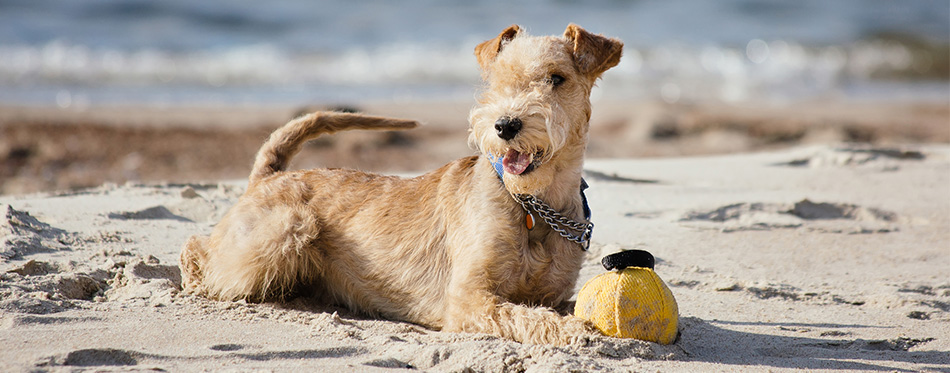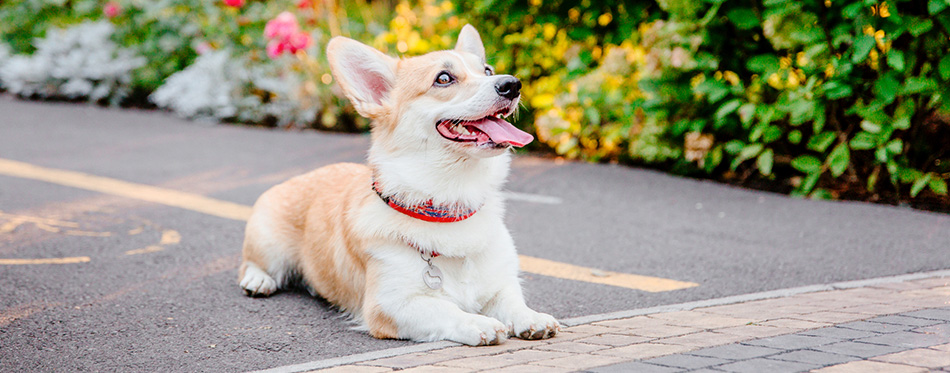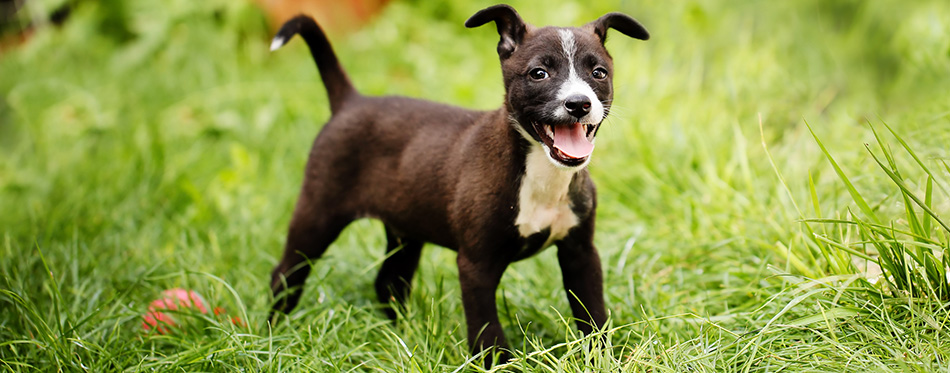You only need to look at very few things in your dog to know that it is very happy to see you. Look at its tail that wags feverishly every time you arrive through the door from work and you’ll see that this behavior is always a very welcome sight. But if you’re thinking that your dog’s tail-wagging behavior can only mean happiness and friendliness, then you’re in for the surprise of your life. It’s either you haven’t really been paying attention to your dog’s subtle body language or you simply chose to ignore it. You see, tail wagging in dogs means much more than a mere expression of canine positive feelings. It can mean a number of things and this is what we’re going to explore in this article.
But first, let’s start with the anatomy of a dog’s tail.

The Tale of a Dog Tail
The tail is that part of the dog that is located at the rear of its body. Technically, it is an extension of its backbone. We humans also have a ‘tail’, known as the coccyx. Whenever we sit, we can almost feel it touching the cushion on the seat. No wonder the coccyx is also known as the human tailbone.
The dog tail anatomy is made up of 6 to 23 spinal bones or vertebrae that are highly mobile. This means that when compared to the vertebrae in the main body of the dog, the spaces in between the spinal bones are wider or larger to allow for greater mobility.
These bones are enclosed by a group of muscles that originate from the lumbar spine, the sacrum, and the coccyx of the dog. These muscles insert into their specific points in the tail bones. These tail or caudal muscles are connected to the tail bones by virtue of tendons. Since the dog tail anatomy is a part of its spinal column, parts of the spinal cord are also found. There are about 4 to 7 pairs of spinal nerves that connect the muscles of the dog’s tail to the central nervous system.
So here’s how it works.
Nerve impulses are transmitted from the brain and down the spinal cord. These nerve impulses stimulate the muscles of the tail to contract which pulls the tendons and the attached bones. This is how the tail is moved from side to side or up and down.
It should be noted that all dogs have tails, although some dogs may look like they don’t have any tail at all. There are two possible reasons for this. There are dogs that may not be born with the required number of caudal bones that will extend from the rest of the spinal column. These dogs still have a tail, except that the tailbones are so short that they don’t show (a lot similar to our tailbone).
There are also dogs that have their tails cut or removed when they are still puppies in a process known as docking. Docked dogs are usually those in the working or herding class where having a tail is perceived to be either a liability or a safety hazard.
The Functions of the Dog Tail
Given that the movement of the dog’s tail is controlled by nerve impulses originating from the brain and spinal cord, it is safe to assume that this is primarily a communication tool. It is a means to convey something to someone or something else like another dog or perhaps another animal. For instance, dog tail wagging in circles is often interpreted as a sign of extreme happiness. It’s like a really huge smile for the dog. It is telling you that it is very happy to see you especially if you observe other signs of canine happiness in your dog’s body language.
But the tail is not just a communication tool. It is also a rudder and a stabilizer. For instance, when running at great speeds and turning at a corner, you will notice your dog move its tail sideward in an effort to balance itself when making the turn. Swimmers like Golden Retrievers and Spaniels use their tail as a paddle. Yes, they do wag their tail on the water to serve as additional propulsion and as a means of steering their body.
The dog’s tail can also be used for spreading the pheromones that are secreted from its anal glands. It wags its tail during such ‘missions’ to fan and spread these secretions to ‘mark’ its territory and to ‘invite’ potential mates. Dogs can also use their tail to cover their behind in an effort to prevent the escape of their scent into the air. This way, they get to protect themselves.
Lastly, Nordic dogs use their tails as insulation. Siberian Huskies, Alaskan Malamutes, Samoyeds, and other Arctic dogs curl their furry tails all the way to the front of their noses to keep their nostrils from drying up and to protect their faces from the bitter cold.
And oh, just in case you’re wondering why do dogs wag their tails when sleeping, it is because they are dreaming of something that they have been previously engaged in where they were also wagging their tails.

What Your Dog Is Communicating When It Wags Its Tail
Given that the most important function of the dog’s tail is communication, let’s try deciphering what Fido is trying to tell us with its tail. But before we do that, let’s first look at how the tail is positioned, tensed, and speed of movement.
Height of the Tail
If the tail is held up high, it usually means the dog is confident. This can also mean the dog is dominant. If it is lowered, it is usually an indication of dog anxiety or nervousness or even timidity. Most folks interpret this as a sign of submissiveness. If the tail is held high yet only its tip is wagging, it is often interpreted as a sign of high arousal. But this doesn’t necessarily mean it’s a positive thing. The dog may already be thinking of going to a more aggressive mode especially if you see other signs like showing its teeth and growling.
Right- or Left-Sided
There is now reason to believe that if a dog’s tail is oriented towards the right when it is wagging, it can be interpreted as one of positive feelings like happiness. If the tail moves a bit towards the left, it’s often an indication of negative feelings on the part of the dog.
Tail Stiffness
A really stiff tail will tell you the dog is less friendly and can even be hostile. But if you see the movement of the tail as loose or flowing, it usually means the dog is in a relaxed, friendly mood.
Wagging Speed
Fast wags are always a good sign that the dog is in a really friendly or approachable mood. If the tail moves slowly, almost deliberately, it is taken to mean that this Fido isn’t in the mood for cordiality.
After taking these into consideration, let as now examine further what the following dog tail wags mean.
Slight Wag
This is often interpreted as a dog’s way of saying “hello”. You may observe it when a dog greets your friend entering through the door. The width of the tail swing is relatively small. It’s like being cordial or amiable without being too friendly.
Broad Wag
If you see your dog wagging its tail in really wide arcs it usually means your dog is in a very friendly mood. This is what many consider as the ‘happiness wag’ which conveys a feeling of warmth, acceptance, and joy in seeing someone who these dogs considered to be their friend. Now, if you see a dog tail wagging in circles, then you know that it is an indication of extreme happiness in your dog.
Slow Wag
We mentioned above that a slow wag usually means the hound is not in the zone for some friendly interaction. This is especially true if it positions its tail at half-mast. If the slow wag is accompanied by a tail that is higher than the dog’s body, it usually means the dog is trying to exert its dominance. It’s like it’s saying “Go away! This is my turf!” If the tail is lower than the body, it’s like the dog is begging you to leave it alone. Remember that a lowered tail is often seen a sign of submissiveness. If the slow tail wagging occurs with the tail neither high nor low, be especially wary since this dog is really insecure. Dogs with serious insecurities are very unpredictable. You don’t want to mess with them.

Very Fast Yet Small Wags
These usually look like very small vibrations on the dog’s tail. It usually indicates an impending action on the part of the dog. It may run away from you or it may stand its ground and fight. If the tail is wagged a bit higher than the body, it’s always taken as an active threat.
Now that you know the different possible meanings of tail wagging in dogs, how about you try observing your canine friend? You’d be amazed at what you’ll discover.

